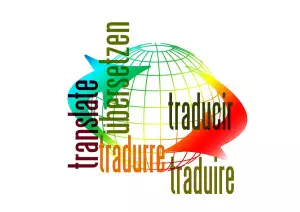Aphasia: When words are silent - A speech disorder that affects health

- 1 Definition of aphasia
- 2 Prevalence and causes of aphasia
- 3 Implications of aphasia for communication and daily life
- Types of aphasia
- 1 Broca's aphasia
- 2 Wernicke's aphasia
- 3 Global aphasia
- 4 Anomie and other types of aphasia
- Diagnosis of aphasia
- 1 Clinical examination
- 2 Language tests and screenings
- 3 Neuropsychological methods
- Therapy for aphasia
- 1 Speech therapy
- 2 Rehabilitation and communication support
- 3 Alternative methods of communication
- Prevention and care for people with aphasia
- 1 Stroke prevention
- 2 Promoting communication and social integration
- 3 Supporting family and loved ones
- New Trends in Aphasia Research
- 1 Neuroplasticity and recovery options
- 2 Developing technologies to support communication
- 3 Genetic and epigenetic factors affecting aphasia
- 1 The importance of aphasia diagnosis and therapy
- 2 Need for public awareness of aphasia
- 3 Hope for people with aphasia and their families
Aphasia is a speech disorder that affects a significant number of people around the world. This disorder affects the ability to communicate and express thoughts through words. Aphasia can be caused by various factors such as brain injuries, heart attacks or neurological diseases. This condition can be very frustrating for both the affected person and their loved ones. Therefore, it is important to remember that aphasia is not a lack of intelligence and that there are methods to improve the communication skills of people with this speech disorder. In this article, we will discuss aphasia and its treatment options in more detail.
1 Definition of aphasia
Aphasia is a neurological disorder that manifests itself in speech impairment in various forms. This disorder can affect both the understanding of words and sentences and the production of spoken or written language. The definition of aphasia is that it affects only the speech area, while other cognitive functions are preserved. For example, persons with aphasia may be able to recognize objects and use them appropriately, but mislabel the names of these objects. Aphasia can be caused by several factors such as stroke, traumatic head injury or degenerative brain disease. It is important to note that aphasia is not a mental disability and patients with this diagnosis still retain their thinking skills and personality.
2 Prevalence and causes of aphasia
Aphasia is a speech disorder that can occur after a brain injury, stroke or other neurological diseases. Approximately 25,000 people in the Czech Republic suffer from aphasia. Causes of aphasia are diverse and include, for example, disturbances of blood circulation in the brain, head trauma, infections or brain tumours. Aphasia can also be caused by neurodegenerative diseases such as Alzheimer's disease or Parkinson's disease. It is important to emphasize that each patient with aphasia has an individual story and only a professional diagnosis can determine the specific cause and type of speech disorder.
3 Implications of aphasia for communication and daily life
Aphasia is a speech disorder that has three main consequences for communication and daily life for affected individuals. The first consequence is a problem with speech comprehension. People with aphasia may have difficulty understanding words and sentences, as well as an impaired ability to perceive linguistic concepts such as timing or grammar. The second consequence is difficulty finding the right words. Sufferers may be aware of what they want to say but cannot find the appropriate words to express their thoughts. This problem can cause frustration and limit social interaction. A final consequence is a reduced ability to express oneself spontaneously and naturally. Individuals with aphasia have to use more effort to formulate simple sentences and their speech tends to be slower and incomplete. These consequences of aphasia have a significant impact on the daily life of the affected individual and can lead to social and emotional problems.
Types of aphasia
Aphasia is a speech disorder that can manifest itself in different ways and types. These include, for example, Broca's aphasia, which manifests itself in problems with speech production and violations of grammatical structures. Wernicke's aphasia, on the other hand, affects the ability to understand words and sentences. Global aphasia is the most severe form of this disorder, where the patient loses the ability to speak and understand speech. Other types include conductive aphasia or anomic aphasia, which have specific symptoms and manifestations. All types of aphasia affect the patient's communication with the environment and can bring many problems to everyday life.
1 Broca's aphasia
Broca's aphasia, also called motor aphasia, is one type of speech disorder. This type of aphasia is manifested by the patient's inability to articulate words correctly and combine them into sentences. Persons suffering from Broca's aphasia are able to realize their thoughts and understand the speech of others, but have difficulty producing words. They often use short phrases or single words. Their speech is slow and unintelligible, which can be very frustrating for those around them. Broca's aphasia results from damage to the brain, particularly the Broca's area located in the left frontal lobe.
2 Wernicke's aphasia
Wernicke's aphasia is a speech disorder that usually manifests itself in difficulties in understanding and forming words. This disorder is caused by damage to a specific area of the brain called Wernicke's area. People with this form of aphasia can use common words and phrases, but are unable to put them together correctly into sentences or express ideas clearly. They often have difficulty recognising nonsense words and tend to substitute other words, which makes communication difficult. In general, the more Wernicke's area is damaged, the worse the symptoms although less severe cases can be treated with speech therapy.
3 Global aphasia
Global aphasia is one of the most severe types of speech disorders, affecting mainly people after brain injuries. This disorder is manifested by the individual being unable to form or understand words and sentences without being severely limited in their ability to understand spoken language. Thus, people with global aphasia often use shortened words or simple phrases and have difficulty expressing themselves fluently and intelligibly. This is very frustrating for them and can make everyday communication with others difficult. Treatment for global aphasia is challenging and often long-term, but the help of a speech therapist and the patience of those around them can help to restore the speech skills of affected individuals.
4 Anomie and other types of aphasia
Anomia and other types of aphasia are speech disorders caused by brain injury. Anomie is manifested by an inability to find words or express thoughts, while other types of aphasia can vary depending on the area of the brain that has been damaged. For example, Broca's aphasia involves difficulty producing speech, whereas Wernicke's aphasia affects language comprehension. Although each type of aphasia is different, they share a common element of communication impairment, and a key factor in successful treatment is prompt diagnosis and access to specialist expertise.
Diagnosis of aphasia
Diagnosis of aphasia is a key step in the correct diagnosis of this speech disorder. The most common diagnostic methods include examining the patient's language abilities, testing perception and articulation, and examining the brain using CT or MRI. If aphasia is suspected, tests are also performed to determine the severity of the disorder and to determine the type of aphasia. A thorough diagnosis allows doctors and therapists to provide early intervention and effective therapy that can help the aphasia patient return to communicating with the environment.
1 Clinical examination
Clinical examination is a key part of the diagnosis of aphasia, a speech disorder. The aim of this examination is to determine what type of aphasia is affecting the patient and to suggest adequate therapy based on this. During the clinical examination, the patient's ability to understand spoken and written speech and his or her ability to actively produce speech are examined. Testing of memory and attention, which are closely related to speech functions, is also an important part of the examination. The clinical examination provides important information about the patient's condition and helps physicians determine the most appropriate course of action for the treatment of aphasia.
2 Language tests and screenings
Language tests and screenings are tools that can be used to diagnose aphasia, a speech disorder. These tests can provide information about the level and extent of the speech disorder and thus help in determining the correct treatment approach. There are many different types of language tests and screenings, including basic communication questionnaires, vocabulary and grammar tests, and reading and writing tests. These tests can be done both formally (in a clinical setting) and informally (in everyday life). It is important to focus on the correct use of these tools to achieve the best possible diagnosis of aphasia and its effective treatment.
3 Neuropsychological methods
Neuropsychological methods have become key tools in the diagnosis and treatment of speech disorders such as aphasia. The three main neuropsychological methods that are used in the diagnosis of aphasia are: 1) Speech Ability Assessment - This test assesses speech abilities such as vocabulary, grammar and communication. 2) Neuropsychological tests - these tests can provide information about language-related cognitive impairments such as memory, attention and executive functions. 3) Functional brain imaging - this method allows direct visualization of the brain during language tasks and can reveal changes in brain activity in aphasia patients. These neuropsychological methods help physicians and speech development specialists determine the type and severity of aphasia in a patient and design appropriate therapy to restore their speech abilities.
Therapy for aphasia
Therapy for aphasia is an important step towards restoring language abilities in people with this speech disorder. There are many different types of therapies that vary according to the type and severity of aphasia in the patient. For example, speech therapy focuses on developing communication skills, while rehabilitation therapy focuses on restoring the mouth and pharyngeal motor skills needed for speaking. In addition to these traditional methods, there are also recreational therapies, such as art therapy or hippotherapy, which are considered effective alternatives. Therapy for aphasia requires patience and regularity in practicing certain exercises and is often accompanied by counselling for patients' families.
1 Speech therapy
Logopedic therapy is an essential part of the treatment of aphasia, a speech disorder caused by brain damage. This therapy focuses on improving the communication of affected individuals and restoring their ability to speak or write. Speech therapists use a variety of methods such as exercises to strengthen breathing muscles, practice articulation, and train word recognition and production. Patience, motivation and regularity are key to successful therapy. Through speech therapy, people with aphasia can improve their social interactions and quality of life.
2 Rehabilitation and communication support
Rehabilitation and communication support are key elements in the treatment of aphasia, a speech disorder caused by brain damage. The rehabilitation plan must be individually tailored to each patient and includes various therapeutic methods and exercises aimed at restoring language skills. In addition, it is important to provide communication support and help the patient find alternative ways of communicating, for example by using gestures, pictures or special apps for mobile devices. All of these factors play a key role in the aphasia rehabilitation process and can contribute significantly to the success of treatment.
3 Alternative methods of communication
Aphasia is a speech disorder in which an individual has difficulty understanding and/or producing spoken or written language. For people with aphasia, communication can be very frustrating and challenging.
There are, however, several alternative methods of communication that can help people with aphasia:
1. Communication boards - These are specially designed boards with pictures or words that allow an individual with aphasia to communicate their intentions without the need for words. These boards can be very helpful for individuals with aphasia who struggle with vocabulary loss or articulation problems.
2. Assisted electronic communication (AAC) devices - This is a technological device that allows an individual to express themselves using text, symbols, pictures, and sounds. These devices are often very useful for individuals with aphasia because they allow them to communicate more quickly and fluently.
3. Alternative methods of communication using body movements - Some people with aphasia may use body movements such as gestures or facial expressions to convey their intentions. These methods of communication can be very helpful for people with aphasia who struggle with speech impairments and have limited verbal communication skills.
All of these alternative methods of communication can help people with aphasia communicate more easily and improve their quality of life.
Prevention and care for people with aphasia
Prevention and care for people with aphasia are very important to ensure maximum quality of life for these individuals. One of the best ways to prevent aphasia is early diagnosis and treatment of the causes of aphasia, such as stroke or traumatic brain injury.
The key to caring for people with aphasia is to provide comprehensive support that covers a range of areas - from physiotherapy and speech therapy to psychosocial support. Careful planning and organisation of the patient's daily life is also an important aspect of this care, so that they are able to function as well as possible in everyday life.
In addition, various therapeutic activities such as music therapy, art therapy or movement therapy can be helpful. Last but not least, it is important to involve the family in the process of caring for the person with aphasia to ensure lasting improvement in the patient's condition and successful rehabilitation.
1 Stroke prevention
Prevention of stroke is very important, especially for those who are at risk or already have some health problems. There are several steps that can be taken to prevent strokes. One of the key factors is a proper diet, which should include plenty of fruits and vegetables, whole grains, and little saturated fat. It is also important to make lifestyle changes and lead an active and healthy life with plenty of exercise and minimal alcohol and tobacco. For people with high blood pressure or diabetes, it is also important to follow medical therapy to reduce the risk of further complications. These measures will help to reduce the risk of strokes and may lead to improved speech in people with aphasia.
2 Promoting communication and social integration
Supporting communication and social integration are key factors in the treatment of aphasia, a speech disorder that affects a person's ability to express themselves and understand language. There are many therapeutic techniques that are aimed at improving communication with patients suffering from this disorder. These techniques include, for example, stimulating the speech centers and working with memory. In addition, it is important to promote the social integration of aphasic individuals by giving them the space to express their feelings and thoughts and allowing them to take part in activities that will help them develop their social skills. Together we can contribute to making people with aphasia feel more part of our society and able to lead a full life.
3 Supporting family and loved ones
The speech disorder known as aphasia can be a great source of frustration and isolation for individuals. There are several options for supporting family and loved ones of individuals with this disorder:
1. Communication through forms other than speech, such as gestures, facial expressions and written messages. Family and loved ones should be prepared to learn and actively use these forms of communication.
2. Support the individual with aphasia in seeking therapy or rehabilitation focused on the disorder. Support from psychological counselling for adaptation to a new situation may also be helpful.
3. Creating a supportive environment at home and in the community that respects the individual needs of the person with aphasia and the efforts of their loved ones to facilitate communication.
This type of support can help improve the quality of life for individuals with aphasia and their families and loved ones.
New Trends in Aphasia Research
In recent years, several new trends and approaches have emerged in aphasia research to help better understand this complex speech disorder. One of these trends is the study of not only language and speech itself, but also their contextual use and interaction with other cognitive processes. Another new area of research on aphasia is the study of the brain using modern neuroimaging techniques such as magnetoencephalography (MEG) or functional magnetic resonance imaging (fMRI). These technologies make it possible to more precisely locate the damaged area of the brain and monitor changes in its functioning during different tasks. New developments in aphasia research are providing many interesting insights into this speech disorder and how to better diagnose and treat it.
1 Neuroplasticity and recovery options
Neuroplasticity has become an increasingly researched topic in recent years in the field of aphasia, a speech disorder caused by brain damage. This process describes the brain's ability to change its structure and functioning in response to external stimuli and damage. This makes regenerative mechanisms possible that can help aphasia patients improve their speech abilities. New therapeutic methods, such as tDCS (transcranial direct current stimulation), aim to activate neuroplastic mechanisms to improve speech function in aphasia patients.
2 Developing technologies to support communication
In recent years, communication support technologies have come to the forefront as an important means of helping people with aphasia. There are many different applications and devices that can help these individuals better communicate with their surroundings. These include special tablet computers that allow users to select words or phrases from a predefined list. There are also various speech synthesizers that can reproduce an individual's voice based on pre-recorded words and phrases. These technologies to aid communication can be a great help not only for people with aphasia but also for other people with speech disorders.
3 Genetic and epigenetic factors affecting aphasia
Aphasia is a speech disorder that can be caused by a variety of factors. Among the most important are genetic and epigenetic factors that may be responsible for the development of this disorder. The first genetic factor, for example, is the inheritance of aphasia among relatives. Another factor is a mutation in a particular gene that can lead to impaired speech ability. In addition, there are also epigenetic factors such as stress and lifestyle that can influence gene expression and subsequently affect the development of aphasia. Highlighting these factors could thus help doctors better diagnose and treat patients suffering from this difficult disorder.
In conclusion, it is important to emphasize that aphasia can be a very difficult disorder for patients and their families. The loss of the ability to communicate and express one's thoughts can affect daily life and communication with loved ones. However, there are various therapeutic approaches that aim to restore speech and improve the communication skills of those affected. It is important to seek the help of specialist doctors and speech therapists as soon as possible to help restore the patient's ability to communicate and thus contribute to improving their quality of life.
1 The importance of aphasia diagnosis and therapy
Aphasia is a speech disorder that can occur after a brain injury or stroke. Diagnosis and therapy of this disorder are very important for the patient's return to normal life. Proper diagnosis makes it possible to determine the type of aphasia and choose the appropriate therapy to help the patient recover speech and communication skills. Therefore, it is necessary to pay attention to the first symptoms of aphasia and seek professional help as soon as possible. Effective therapy can significantly improve the quality of life of the patient and his/her family.
2 Need for public awareness of aphasia
Public awareness of aphasia, a speech disorder caused by brain damage, is essential for effective support and treatment of individuals affected by this disorder. Being informed about aphasia allows people to better understand the needs and challenges faced by those with the disorder and can provide the desired support and empathy. In addition, information about aphasia can be useful to healthcare delivery organisations and policy makers who can then develop better support systems for individuals with aphasia and their families. Therefore, there is a need to continuously raise awareness of this speech disorder throughout society.
3 Hope for people with aphasia and their families
Aphasia is a speech disorder that can be very frustrating for people with this diagnosis and also for their families. However, there are hopes for improving this situation. The first hope is quality speech therapy, which can help people with aphasia develop new communication skills and learn to communicate with those around them. The second hope is new technologies such as digital applications, special computer programmes or voice assistants that provide help with communication. A third promise for people with aphasia and their families is group support. There are many organizations and groups dedicated to people with aphasia where they can meet and share their experiences with others in similar situations. These three different options show that there is hope for people with aphasia and their families to cope with this speech disorder and lead full lives.
Published: 31. 10. 2023
Category: Health



